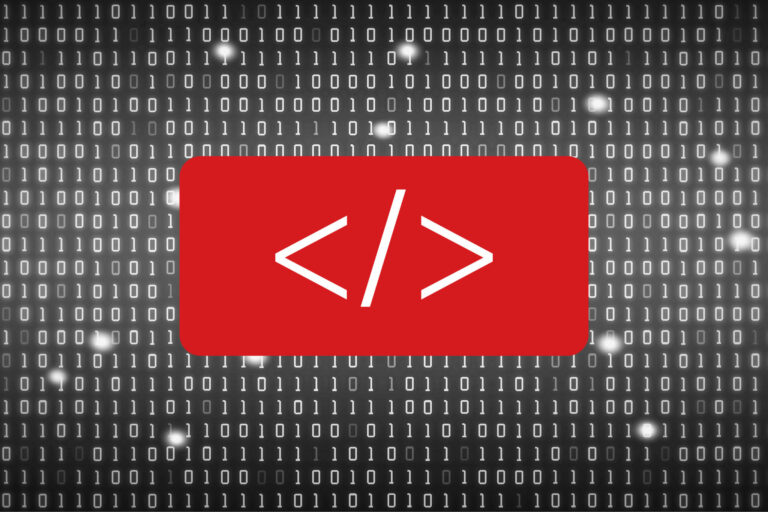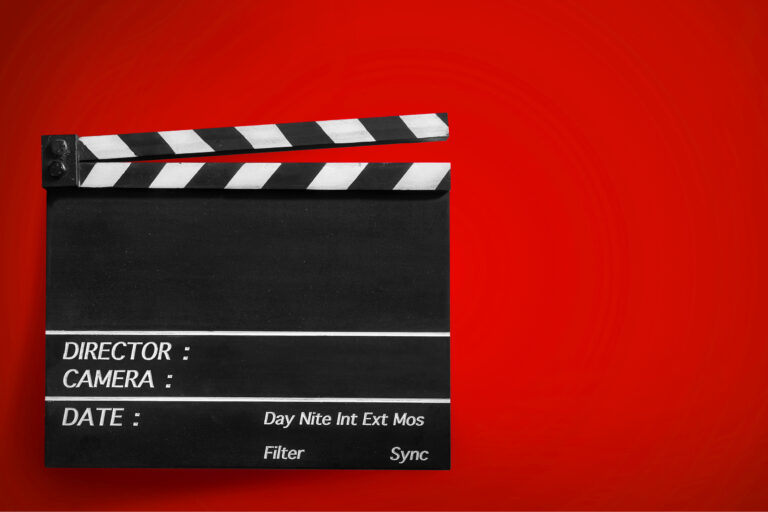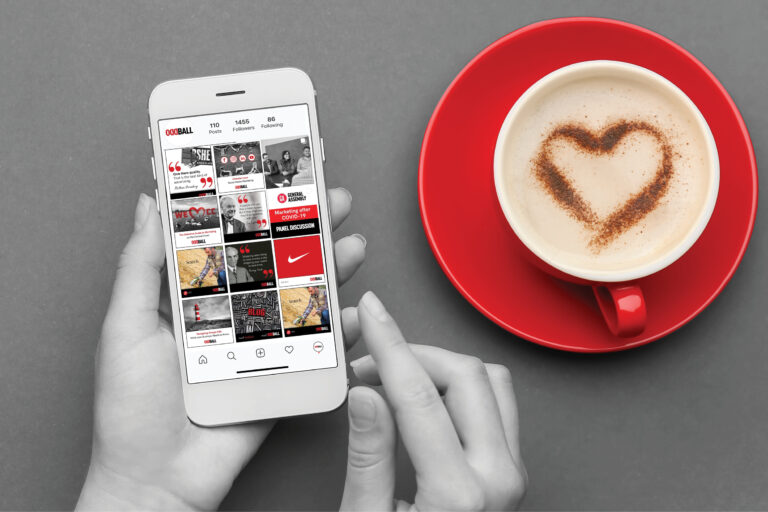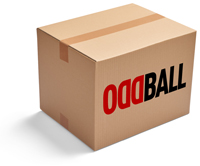The marketing landscape is forever changing.
It’s hard keeping up with all the new strategies that pop up.
It’s even difficult to remember proven marketing strategies with the pace at which you work.
We have put together this comprehensive list of strategies for you to explore, share and refer back to when planning your next amazing marketing project or campaign.
What is a marketing strategy?
A marketing strategy is a plan of action designed to promote and sell a product or service, thereby reaching prospective consumers and turning them into customers. Sounds simple, right?
Well, not really, when you consider it includes everything from the business’ value proposition, key brand messaging, data on target customer demographics, plus a mapping out of key touch points and other overarching elements.
There are many ways to market a cat.
When was ‘marketing strategy’ born?
Marketing is old. You can go way back through history for examples of marketing in action.
In 35BC Pompeii, fish sauce maker Umbricius Scauras, used mosaics bearing his personal brand and quality claims on amphora in the atrium of his house. Nice job, Umbricius!
But the more encompassing marketing strategies we are more familiar with today emerged from the Industrial Revolution, with its mass production of goods and services.
Marketing Strategies – The Ultimate List
As a business owner or a marketing manager, you have a number of options to choose from when marketing your product or service.
Here are 54 of the most notable marketing strategies at your disposal.
Account-Based Marketing
- What is it? Account-based marketing (or ABM) is where key business accounts are marketed to directly – as units of one. It involves honing in on a few key accounts, or those that hold the greatest promise.
- When to use it: ABM is typically a B2B marketing approach involving mainly enterprise-level sales organisations with over 1000 employees. But don’t let this stop you, if you can put in the extra time and effort required. If you’re targeting enterprise or specific top job titles, or if you sell something really expensive to a small segment of the market, then go for it.
- Example: ABMs That Took the World by Storm
Inbound Marketing
- What is it? Inbound marketing is “magnetic”, actively attracting leads looking for solutions. It uses content, blogs, events, SEO, social media to bring in new business and develop brand awareness.
- When to use it: When you have the time to grow your audience. Don’t expect quick wins – the ROI takes time and measuring its success can be difficult. Think of inbound marketing as the engine room of your business marketing strategy. It doesn’t have the grunt of a Porsche or a Lambo, but its fuel efficiency is amazing over the long distance.
- Example: 4 Inbound Marketing Examples (That Are Actually Successful)
Demand Generation
- What is it? Demand generation aligns marketing closely with sales. It involves tracking every stage of the marketing funnel — from bringing in a new visitor to your website, to converting that visitor into a paying customer.
- When to use it: If you’re ready to think strategically about who you’re targeting with an aim to create direct sales leads, this is a next-step approach for your business. Make sure you have lots of free tools ready to distribute: ebooks, lead magnets, reports etc. This helps generate demand and educates customers on problems your product or service fixes.
- Example: How to Use Demand Generation For Growth
Point-of-Purchase Marketing
- What is it? Point-Of-Purchase (or POP) displays are removed from the standard aisle shelf, effectively inserting a product into a shopper’s path anywhere throughout the entire store – not just at the checkout.
- When to use it: Whichever display you use, it must be of a high quality or it could have a negative effect on your brand. POP displays have been shown to increase sales at retail as much as 20%.
- Example: 9 Best Point-Of-Purchase Displays
Affiliate Marketing
- What is it? When you refer to a product or service by sharing it on a blog, social media platforms, or website, that’s affiliate marketing. The affiliate earns a commission each time someone makes a purchase through the unique link associated with their recommendation.
- When to use it: When you’ve built up relationships with other businesses or influencers, built a large following yourself, or joined an affiliate program, you can work together to market and leverage your product or service through these channels. Or earn commissions from what you promote.
- Example: Affiliate Marketing that will inspire you
Conversational Marketing
- What is it? Conversational marketing is the use of chatbots, live chat and social monitoring to build real conversations and relationships with clients and customers.
- When to use it: This is definitely a case of choosing your conversational marketing battles. You have to be real and not overbearing or redundant. So how do you make a chatbot sound real? Do your research. Tools such as Drift, HubSpot Conversations and other chatbot platforms can give you a great start in this arena.
- Example: 6 Examples Done Perfectly Right
Solution-Based Marketing
- What is it? Solutions-based marketing focuses on the needs of the customer rather than the product or service itself. A business finds a specific problem – or series of problems – that the customer has and tries to meet that need by offering a product specifically geared toward solving that problem.
- When to use it: Product-focused businesses may find they run out of growth potential. Putting your product in context means the sales team benefits. The right kind of messaging leads to faster, more streamlined sales. Also, customer problems get solved faster and businesses can create differentiation.
- Example: The Cat Products Market is Purring Like a Kitten
Key Person of Influence
- What is it? KPI marketing is about positioning yourself as an authority in an area or on a topic, or being renowned for something in the community.
- When to use it: When you are a specialist in an area; a niche topic authority. But you have to work on building your profile through publications, seminars, speaking engagements, media events. It takes a lot of focus and effort.
- Example: Kim Kardashian. Enough said.
Guerilla (Ambush) Marketing
- What is it? Guerrilla marketing draws attention to a brand, idea, product or service in an unusual way, making an unexpected and memorable impression on consumers, and creating buzz.
- When to use it: It’s not an ideal strategy for brands that are risk-averse. Don’t try to be something you’re not. Guerrilla marketing is considered illegal when a brand tries to capitalise on an intellectual property that they have not paid to be a part of. You don’t need a big budget, just a big idea.
- Example: On October 14th, 2012, Red Bull and Austrian extreme athlete Felix Baumgartner set a world record for the highest skydiving jump.
Cause (Social) Marketing
- What is it? Cause marketing focuses on social issues, such as equality or diversity. It’s designed to raise attention around the topic, while increasing a business’ profits.
- When to use it: Business should exercise caution when choosing a social cause to get behind. Some examples of social causes include: Fighting poverty, preventing bullying, civil rights advocacy. While often worthwhile, campaigns can backfire if they’re not expertly executed. Here’s Pepsi’s one that led to resignations.
- Example: In 2020, The Body Shop launched it’s “Time To Care” social marketing campaign to thank healthcare workers for their dedication. The Body Shop joined shelters and assisted living communities to donate their soaps. They used the hashtag #TimeToCare to promote taking care of yourself in healthy ways. Self-care bundle giveaways reinforced their strategy.
Close-Range (Proximity/Hyper-Local) Marketing
- What is it? Close-range marketing campaigns target consumers who are within a certain radius of a business or venue and have activated their phones to receive media from marketers.
- When to use it: Proximity marketing is good for the distribution of media at concerts, information, gaming, and social applications, retail check-ins, payment gateways, and local advertising within a small area – a captive audience.
- Example: McDonald’s partnered with Turkish loyalty app Shopping Genie to create beacons (WiFi/Bluetooth) at its 15 cafes in Istanbul. The mobile beacons targeted customers in and around the premises of a McCafé. Customers received mobile coupons, via the app, which prompted them to purchase a coffee and receive a beverage from the new drink line for free.
Transactional Marketing
- What is it? Transactional marketing is all about making the sale. It is often built around single purchases and doing a lot of volume, as opposed to building customer loyalty.
- When to use it: If you have a high-quality product that sells itself, or is available at an irresistible price, then transactional marketing could be the best for you.
- Example: A sales pitch on the shopping channel is a great example of this type of strategy.
Scarcity Marketing
- What is it? Scarcity uses a finite amount of product or service available and triggers FOMO (fear of missing out) to create urgency from consumers.
- When to use it: Use it when there is no particular deadline for your product/service and the sales journey is a longer process.
- Example: Booking.com uses scarcity marketing to great effect. Their deals won’t last forever!
Word-of-Mouth Marketing
- What is it? Word-of-mouth marketing encourages people to spread the word about a product or service, sharing it with their families, friends, colleagues and social media connections. It’s not the same as viral marketing, referral marketing or influencer marketing.
- When to use it: When you have a product or service that is amazing and guaranteed to generate a lot of buzz when enough people encounter it.
- Example: The 2014 ALS Ice Bucket Challenge enabled The ALS Association to increase its annual funding for research around the world by 187 percent.
Viral Marketing
- What is it? Viral marketing is a type of promotion that relies on an audience to generate the message of a product or service. It differs from word-of-mouth and influencer marketing in that the speed a product or service is promoted happens very fast and is spread by – and across – many channels and people. The end result is many people know about the product or service, especially those outside its target audience.
- When to use it: Few viral campaigns manage to hit the mark because they are too forced. Look for opportunities on a topical issue which relates to your product or service. Know your social media audience really well. Make your content shareable and use language that fits the medium you’re using.
- Example: This excellent Dollar Shave Club video hits the mark. Subs and interest spiked directly afterwards.
Branding
- What is it? Brand marketing is a way to promote your product or service by promoting your brand as a whole. It is essential to clearly define who you are as a brand before you can even begin to market it.
- When to use it: Marketing’s a great way to get a customer’s attention, but branding is a great way to keep their attention. The best time to start the branding process is when you just established a business.
- Example: Apple is one of the most successful brands of our generation. No matter what Apple releases, you can assume it will be high-end and unique.
Seasonal Marketing
- What is it? Seasonal marketing is marketing products or services at certain points of the year. That could be Christmas, Easter or Halloween, etc.
- When to use it: Seasonal marketing doesn’t have to coincide with an “official” season or event. Many businesses can market their product or service at certain times of the year as they’re more suited to that time of the year.
- Example: UK supermarket giant Sainsbury’s Christmas 2014 ad, titled “1914”, was made in partnership with The Royal British Legion and was inspired by the real events that took place exactly 100 years before it was made.
Evangelism Marketing
- What is it? Evangelism marketing takes word-of-mouth marketing to 11. Businesses foster customers who believe so strongly in a particular product or service that they freely try to convince others to buy and use it.
- When to use it: Evangelism marketing is personal, so it stands to reason it’s powerful. Plus, it’s a type of grassroots movement that can be hard to argue with. Brand evangelists materialise when you create the best product you can possibly make, serve your customers well, and produce the best content possible.
- Example: Domino’s Pizza uses evangelism marketing to fabulous effect. Domino’s looked to its base (pardon the pun) on social media and went large by structuring its messaging around what it’s customers were saying.
Outbound Marketing
- What is it? Outbound marketing is a traditional method of marketing where businesses and marketing managers push messaging out to potential customers. It covers activities such as trade shows, seminar series and cold calling.
- When to use it: Outbound marketing immediately raises brand awareness and gets your company/product/service in front of the right leads, and helps you close those buyers who are ready to make a decision. But outbound marketing is costly and the ROI is much lower than inbound marketing.
- Example: TV commercials, radio ads, print ads (newspaper ads, magazine ads, flyers, brochures, catalogs, etc.), trade shows, outbound sales calls (AKA “cold calls”), and email spam.
Event Marketing
- What is it? Event marketing involves running a themed exhibit, display, trade show, ceremony, gala or presentation to promote a product, service, cause, or organisation, which can be in-person or online. Sponsors are often involved.
- When to use it: According to Forrester Research, events make up for 24% of the B2B marketing budget. Event marketing allows you to roll out new products at a lower cost, you get immediate feedback, you’re building your brand as you go, and you’re networking.
- Example: When JetBlue launched direct flights from New York to Palm Springs, they dropped two ice molds with prizes frozen into them in Manhattan, Flatiron Plaza Washington Square Park in 2016, offering New Yorkers the chance to win free airfare and accommodations to the desert oasis.
Freemium Marketing
- What is it? A “freemium” marketing strategy is where a business offers a pared-down, no-frills version of a service indefinitely, and for free, with the hope that users will move to a paid version for more and better features later on.
- When to use it: The freemium strategy works if your product or service offers good value, it engages customers and encourages them to grow into the offering. The trick is not to give away too much – or too little! It’s all about balance. Like a tightrope walker. Staring down at a deep chasm. You’ve got this!
- Example: Spotify is the market leader in offering a solid freemium product.
Content Marketing
- What is it? Content marketing is all about creating useful content to a specific audience without a CTA or strong sales message, the strategy is to create so much value to the audience that your product or service becomes a leader in the market through education and entertainment.
- When to use it: When you have loads of creative, entertaining and informative, relevant content at your disposal. It builds trust in your business and promotes brand awareness.
- Example: TED works well because they’re committed to creating “ideas worth spreading”.
Search Marketing
- What is it? Search marketing involves paid and unpaid efforts to boost online presence on search engines like Google, Bing, and DuckDuckGo. The two main examples are Search Engine Optimisation (SEO), and Pay Per Click (PPC) advertisement.
- When to use it: PPC, such as Google Ads, is a very efficient way to showcase your brand to customers. SEO is a long-term approach to improving your organic ranking. Both PPC and SEO require in-depth strategic planning and a decent understanding of how to successfully implement the strategy. Poor PPC implementation will cost you money with no return, and bad SEO will drop rankings and could even get your site penalised.
- Example: Every Google search represents search marketing strategy. The websites on the first page of Google, whether by advertisement or organic, represent an applied search marketing strategy. What differentiates the best from the rest is the in-depth strategising. Does your website rank for queries that relate to what you offer, or are you showing up for unrelated searches?
Direct Marketing
- What is it? Emails, online adverts, flyers, database marketing, promotional letters, outdoor advertising, phone text messaging, coupons, phone calls, postcards – these are all examples of direct marketing.
- When to use it: Whether a direct marketing campaign works or not depends on who you are targeting, the message you want to get across and response you want to get. The results of direct marketing aren’t guaranteed. A badly-planned campaign can be a waste of money. But, direct approaches provide direct feedback. So, if you want to test where you are in the market, a direct campaign will give you the answer.
- Example: For Nike’s Stadium Shoe Box campaign, limited edition shoe boxes were sent out to kids and inside was a print of a stadium. When opened, it activated a sound of the roar of the crowds.
Niche Marketing
- What is it? It involves identifying specific target audiences with a specialised offering. A niche market is a small part of a larger market that has its own specific wants and needs, which are different from the larger market in some way. For example, if you build homes, a niche market for your business might be tiny homes.
- When to use it: Your business really has to know its stuff. One of the benefits of a niche market is there is little or no competition – there are fewer companies out there with the exact same offering.
- Example: Lefty’s San Francisco: The Left Hand Store was the very first store in the US to specialise in products for left-handers.
Drip Marketing
- What is it? Drip marketing is a set of messages around your product or service – most often via email – that are sent out automatically on a schedule. People are given the right information at the right time, rather than all at once.
- When to use it: When you want to control your messaging and tailor it for different audiences at different stages of their buyer’s journey.
- Example: Netflix crafted an excellent win-back drip campaign for customers who abandoned their brand. The streaming service sent a cancellation email with a call to action, inviting them back if they changed their minds. Over the next three months, Netflix sent its former customers a series of emails with all the new movies and TV series they were missing out on. Finally a targeted email showed exactly what the viewer needed to do to get back in on all the action.
Community (Relationship/CRM) Marketing
- What is it? Community marketing is all about connecting, engaging, and establishing long-term relationships with existing customers within a group or community of similar people. The aim is not sales, but to build a community around your product or service.
- When to use it: It’s great for growing your brand. Customers want to feel part of the brands they buy from and they want to be able to trust the companies that they engage with on a regular basis.
Social Media Marketing
- What is it? Social media marketing involves the use of social media to promote your service or products to a wider community. Social media helps you connect, engage, nurture and build strong relationships with your ideal audience that much easier. Social media is quite multifaceted, from providing organic and paid advertising options you’ll be able to create full funnel advertising strategies that nurture your target audience the entire way. Being the only avenue for your business to directly communicate with new and existing audiences, your ability to scale your business is endless.
- When to use it: Right now! Why? Like the majority of us, you’ve probably checked some form of social media already multiple times today – whether that being your Facebook, Pinterest, Instagram, Tiktok (and the list goes on), your audience is the same. With an estimated 3.6 billion people using social media in 2021 (and an estimated increase to 4.41 billion in 2025), there is no reason why your business can’t ride the wave. The first major step is identifying where your audience is so you can ensure you are also in the right spot.
- Example: Xero used Facebook Ads and integrated the Facebook Conversions API to enhance the quality and volume of new leads, resulting in an 8% increase in account sign-ups on their website.
B2B Marketing
- What is it? B2B (business-to-business marketing) refers to promoting products and services to other businesses and organisations.
- When to use it: This is very dependent on what your business provides, and on a more deeper level – why your business exists. If you currently only sell to consumers, is there an aspect of your business that could be repositioned to provide the same or a modified version of your offering to another business?
- Example: Us! We are a prime example of B2B. Being an agency means that we help other businesses just like you to promote your products and/or services.
Mobile Marketing
- What is it? Mobile marketing involves using ads that appear on mobile smartphones, tablets, or other mobile devices.
- When to use it: If you’re looking to reach an audience on their smartphones, tablets, and other mobile devices, this is the perfect solution. Considering more people are using their mobile devices these days than their computers or more traditional forms of media, it’s a safe bet. It’s particularly important if your brand, product or service is mobile-related or mobile friendly.
- Example: Ford’s “Send us a Text” promotion was for the car brand’s release of their Escape and Taurus models. The company asked people to text the word ‘FORD’ to them. Potential customers were asked in a return text for the type of vehicle they were inquiring about, their name, and zip code. Later, a local Ford dealer would follow up. It resulted in a 15.4% conversion rate for dealers, and millions in sales.
Sampling
- What is it? Sampling gauges the opinions of a number of people, chosen from a specific group, in order to find out more about the consumer. It’s a market research technique, used because it’s difficult to collect data from every person in a customer database.
- When to use it: Sampling is good if you have a new product, or you’ve improved an existing product or service. You can get feedback from consumers quickly. Just make sure your sampling group is ideal.
- Example: Glade partnered with Walmart in the US to inject the packing pillows used to protect products during home deliveries with its air freshener. The campaign generated a 83% increase in sales of Glade’s home fragrances on Walmart.com during its first week.
Personalised Marketing
- What is it? Being marketed to on a personal level can be the most powerful form of marketing. As long as the connection is made, the consumer is engaged and immersed in the brand.
- When to use it: Personalised marketing is costly in both time and money, but when done right, it’s extremely rewarding. You need to follow the data and put the tracking cookies to work. The trick is not to be too personal, or it could come off as creepy.
- Example: Grammarly takes the data it collects from its users to send weekly personalised reports, providing an analysis of a user’s writing technique.
Insight Marketing
- What is it? Insight marketing is a data-driven approach which explores why a consumer is interested in a particular product. Applying insight to content makes it more provocative and engaging.
- When to use it: Feedback can sometimes be described as a marketing insight. But feedback alone is nothing if you don’t do something with it. When your marketing is based on what the consumer wants as well as the core values of your business, you’ll both get what you want.
- Example: Pinterest’s “What If” campaign came about through insight marketing, which found 84% of people on its site said it helps them learn new things, and 70% of people search, save or click through on Pins to learn more.
Influencer (Endorsement) Marketing
- What is it? Influencer marketing is closely related to celebrity endorsements – “Someone famous with a large fan base letting their audience know what businesses they vouch for through an advertising campaign”. It’s easy for people today to build a following and then sell to that audience. Even with only 2000 followers – these are called micro-influencers.
- When to use it: Influencer marketing can be a really powerful tool for businesses launching a new product/service to market or a start-up looking to penetrate a highly competitive marketplace. Influencer marketing generates social proof as you are trading off the goodwill and trust of the influencer, but make sure your business lines up with their audience. Look for their engagement rate over the amount of followers. Micro-influencers can have a much stronger pull than someone with a 200k unresponsive audience.
- Example: Frank Body stands out in a beauty market by introducing a new product by incorporating a mix of user-generated content and both big following and micro influencer promotion.
Stealth (Buzz) Marketing
- What is it? Stealth marketing, also known as buzz marketing, is any marketing strategy that advertises a product to people without them knowing they are being marketed to. With consumers becoming more and more marketing savvy, it gets tougher to do stealth marketing.
- When to use it: Product placement can be expensive as you want it to be. But if you think smart, you can save yourself a heap of cash by creating an organic audience for your product. It’s risky, though, and can cost you some reputation points if the public catches on to your strategy too soon.
- Example: Fashion icon Daymond John asked hip hop stars to wear his FUBU clothing line in public. With no ad spend, FUBU was exposed to a huge audience and the clothing line became a success.
Native Marketing
- What is it? Native advertising is paid content. Articles, infographics, videos, etc, appearing alongside – or as part of – a normal content offering. You’ll often find native ads in social media feeds, or as recommended content. Unlike display ads or banner ads, native ads don’t really look like ads. They look like part of the editorial flow of the page. It is often referred to as advertorial.
- When to use it: The key to native advertising is that it is non-disruptive – it exposes the reader to advertising content without screaming “I’m an ad!”.
- Example: German Rail’s “No Need To Fly?” native ad campaign showed how local destinations in Germany looked similar or even identical to exotic locations around the world. The images were placed side by side, together with the travel cost for each, proving how much cheaper it is to go by rail to these local destinations. The advertiser picked up a very handy 24% boost in revenue for German Rail.
Partner Marketing
- What is it? Partnership marketing is a collaboration with another business to create a marketing campaign that benefits both parties. Partnership campaigns are mutually beneficial and help both parties reach their objectives.
- When to use it: Startups can be intimidating, so you may want to form a partnership with a trusted business for mutual support. For existing businesses, partner marketing works when you find an excellent complementary business that adds value without competing for the same customer base as yours.
- Example: When Volvo became the official car of LEGOLAND. Good times.
User-generated Marketing
- What is it? User-generated marketing is where you get your customers to create content, buzz and awareness around your product or service.
- When to use it: Use it when your marketing strategy is focused on building a strong social presence. Social Media is the easiest place to leverage user-generated marketing and works well using hashtags to compile a community base of content.
- Example: “Share a Coke” campaign. By printing names on the packaging, Coke encouraged their customers to take photos and share them with their audience.
Experiential (Engagement) Marketing
- What is it? Experiential marketing is all about immersing consumers in live experiences. It gets customers directly hands-on with your product, service or cause.
- When to use it: It may sound like event marketing, but this is less about the event itself and more about engaging with customers directly, in a tangible way to build brand awareness.
- Example: The WWF’s #StopWildlifeTrafficking charity campaign used a life-size elephant hologram that roamed the streets of London for a week to raise awareness for animal trafficking.
Interactive Marketing
- What is it? Interactive marketing is an extension of direct marketing into methods that allow direct two‐way communications between an individual buyer and the seller.
- When to use it: Interactive marketing helps to build brand recognition but also allows businesses to try to influence consumers with appropriate content, exactly where they spend the majority of their time.
- Example: This video from Maybelline New York fashion designer Kelly Framel and Rapt Media. After the video, viewers can choose to watch makeup tutorials, making their selections by clicking on buttons within the video.
Persuasive Marketing
- What is it? People think they are able to make rational purchase decisions most of the time, but they instead mostly make decisions based on how they feel about a product or service, or other often illogical reasons.
- When to use it: When your business can play on any or all of these six powerful persuasive principles of marketing: reciprocity, authority, social proof, commitment, liking and scarcity, you can use persuasive strategies.
- Example: Burger King waged a shadow campaign against Wendy’s with promoted tweets. They used the complaints on social media aimed at its direct competitor.
Controversial Marketing
- What is it? When a brand intentionally offends or surprises its audience by violating the norms of social and personal values and morals in order to spark debate and discussion, and build brand awareness.
- When to use it: Using controversy as a marketing strategy is risky because it can often generate negative publicity and affect the reputation of your business. Use sparingly and not as a long-term strategy.
- Example: Poo-Pourri’s “Girls Don’t Poop” made quite the splash.
Sponsorships
- What is it? Sponsorship involves providing funding to a particular group or event in exchange for opportunities to reach a very specialised audience.
- When to use it: It’s low-cost and offers great ROI due to its strong ability to connect with customers and grow your social media following. Sponsorship offers backlink potential, helps you gain trust and increases your brand awareness. What’s not to like?
- Example: Many businesses sponsor sports teams at all playing levels. They have their logos and advertising displayed in front of all the team’s fans at games. They can also add special perks, booths, and products or services in the stadiums.
Referral Marketing
- What is it? Businesses can set up referral marketing strategies with other companies to drive sales between each other, or they may use a referral strategy to incentivise its customer base to refer a friend.
- When to use it: When you can identify good networking opportunities with other businesses, or when you want to reach wider markets through your existing customer base.
- Example: PayPal’s refer-a-friend program gives its users (and their mates) free money for spreading the word about its service.
Marketing Automation
- What is it? The tool you always wished for, but never knew possible, Marketing Automation is a tool that allows businesses to streamline and automate their marketing tasks and workflows – ultimately increasing efficiency allowing you to focus on other areas of the business. There are multiple forms of marketing automation including email marketing, social marketing, CRM integration, lead magnets, campaign management and lifecycle management.
- When to use it: While traditionally automation marketing was used to reduce manual tasks, speed up processes and quickly and efficiently deliver templated messages to customers, Automation actually has so much more to offer and is increasingly becoming the go-to tool to create a personalised journey for every lead. Automation can easily be the most important part of any campaign to nurture the user through the funnel to become a lead.
- Example: McAfee, a software publisher known for its anti-virus software, was able to quadruple its conversion rates and generated more qualified leads through marketing automation. By having the capacity to segment users they were able to deliver personalised information at the right time depending where the user was in the buyer’s journey. This led to a reduced rate in leads, however an increased rate in conversions due to their lead quality improving.
Co-branding Marketing
- What is it? Co-branding is a marketing strategy where an alliance of brand names is jointly used on a single product or service.
- When to use it: When you can offer a form of exclusivity around your product or service. Typically high-end.
- Example: Rapper Kanye West and Adidas’ co-branding campaign Yeezy has generated almost $1.7 billion in 2020, Forbes and Bloomberg report.
Gamification
- What is it? Gamification marketing strategy is an elaborate attempt to merge a company’s marketing objective, with game-like experiences. In other words, it’s making a game out of something for your customers.
- When to use it: Two major reasons why companies implement such a strategy is to drive sales, and increase customer engagement. By creating a fun or addictive experience for customers, your brand can appeal to a wider range of consumers. Other benefits include creating fun experiences, inciting a positive association between the consumer and company, increasing brand awareness, and improving customer loyalty.
- Example: Gamification In Marketing: Valid Strategy, Or Evil Trick?
Contest Marketing
- What is it? Contest marketing uses contests, giveaways, sweepstakes or lotteries to boost brand awareness and reach new potential customers.
- When to use it: To reach new markets, to grow a brand and encourage engagement.
- Example: Dove‘s “Real Beauty Should Be Shared” Facebook contest asked fans to tell them why their friend “represents Real Beauty”, by filling in their friend’s name and two things that make them beautiful. The winners became the next faces of Dove.
Employee Marketing
- What is it? Don’t overlook your employees! Engaged staff can be the source of some of your most effective content for marketing purposes. Empowering and encouraging your employees to be an advocate for your business is an excellent strategy.
- When to use it: When you have happy employees who are passionate about their work and your business.
- Example: General Electrics released a series of films called ‘What’s the Matter with Owen’ depicting a young engineer who could not explain to people around him what he was doing. This engaged the engineers at the company and also made the firm more relatable to new hires.
Earned Media (PR)
- What is it? Earned media, or earned content, is any material written about you or your business that you haven’t paid for or created yourself.
- When to use it: If you have a product or service that is shareable and you’re willing to put the time in to be part of the conversation around it, you can reach out to TV and print and other media outlets and start crafting your story. Incorporate influencers in your content, or be an expert in a specific area.
- Example: Nathan Fielder in his TV show Nathan For You is an expert in leveraging earned media. His Oak Glen Petting Zoo “stunt” serves as a how-not-to-do earned media, but to reverse engineer the episode, all the marketing strategies are on display here to use the earned media strategy to good effect.
Agile Marketing
- What is it? Think of agile marketing as the ability to coordinate your different marketing team members so that they’re all working together and adjusting very quickly to changes, so new approaches can be implemented faster. It’s about hacking growth and reacting to data faster by regularly reviewing processes.
- When to use it: It’s useful for marketing teams that operate as part of a larger cross-functional team and require approval for all marketing actions. Agile marketing speeds things up so the business can react quicker to new changes in the industry.
- Example: John Symond and Aussie Home Loans went agile in 2002, pivoting itself into “Aussie”, the mortgage broker we know it as today.
Behavioural Marketing
- What is it? Behavioural marketing is where content and/or targeted ads are served based on a user’s past actions and behaviours. The hope is that if the messaging is more relevant to the user, they’re more likely to engage and buy the product or service.
- When to use it: When you can use the data properly: all the cookies, browsing history, web analytics, purchase history, social info – when you can capture and develop a good understanding of that particular customer.
- Example: Amazon has a great model, where it looks at what you have bought previously and displays relevant ads and content for similar products or those by the same company, or those based on other users.
Recommendation Marketing
- What is it? Recommendation marketing is where you use reviews from satisfied customers to market a business.
- When to use it: If you want to promote and/or highlight your business’ customer experience, this is a perfect strategy to do that. You need to be prepared for negativity and detractors, though.
- Example: Online shop Zappos.com uses recommendation marketing very well. Presenting products that have been evaluated by other customers can be really persuasive. Buyers trust reviews from other buyers because they are less biased than the seller’s own description of the product.
Email Marketing
- What is it? Being a staple for marketers since the 90s, email marketing can help you strike gold … If you know what you’re doing. Email marketing gives you your very own magical shiny golden ticket (on the polar express) to keep in regular contact with potential, current and previous customers by creating and sending personalised messages to your database. Email marketing can help you to incentivise loyalty and keep top of mind in a nonchalant way.
- When to use it: Email marketing can assist you in announcing business updates, changes, opening hours, latest news and seasonal promotions and sales to potential, current and future clients. With email marketing you can also:
- Nurture leads
- Building brand / service awareness
- Reach prospects
- Boost retention rates
- And ultimately generate more leads and/or sales
- Example: Newsletters quickly became BuzzFeed’s main source of traffic. Customers expected an email in their inbox the same time every week providing specially curated content, new items, interesting facts and stories on the latest topics.
As a business owner, or a marketing manager, you may have used one or many of these strategies – or you may just be starting out on your marketing journey.
These are all tried and tested strategies, each with their own pros and cons.
Keep this guide as a handy reference, or touchpoint, as you map out your marketing journey and feel free to share it with anyone who could benefit from the approaches listed here.
And if you need a whole marketing approach with an agency that offers you the full suite of services under the one roof for your business or your next marketing campaign, please give us a call, or drop us a line. We look forward to working with you!






